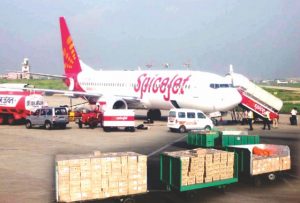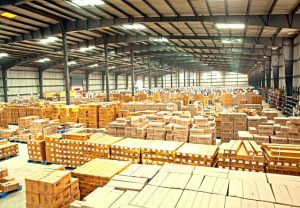India's 'One Nation, One Tax'
Under Goods and Services Tax (GST), the rates are going to be 0%, 5%, 12% and 18%. GST is expected to have a sweeping impact on many sectors, most importantly the logistics sector, which has been constrained by infra-structure & taxation issues.
Touted by the National Democratic Alliance (NDA) government as India’s biggest tax reform in 70 years since independence, the Goods and Services Tax (GST) was launched on July 1, 2017.
This was first proposed in 2000 but it was only the NDA government, under Prime Minister Narendra Modi’s leadership, that idea came into frusion.
GST is an indirect tax applicable throughout India, replacing multiple cascading taxes levied by the Central & State governments. It has been advertised as ‘One Nation, One Tax’.
Under GST, goods and services are taxed at the following rates – 0%, 5%, 12% and 18%. GST is expected to have a sweeping impact on many sectors, most importantly the logistics sector, which has been constrained by infrastructure and taxation issues.
GST is expected to optimize the production and distribution of goods and services and along with it, it will help speed up cargo movement across the country and beyond.
Indian check-posts and customs have been notorious for collection of toll and ‘bribe’, and of course unnecessary stoppage of vehicles.
A 2015 report by the Transport Corporation of India (TCI) and the Indian Institute of Management – Calcutta said that the stoppage expense (average expense incurred due to the stops along the way such as check-posts and customs) per ton-km had increased from Rs. 0.16 per ton-km to Rs. 0.28, a 75 percent increase between 2011-12 and 2014-15. The imposition of duties by State Governments at checkpoints was one of the reasons for the rise in logistics cost and this is expected to come down drastically under GST regime.
Consolidation of warehouses
Prior to GST, goods incurred 2 percent central sales tax (CST) when they are manufactured in one state and sold in another.
To avoid this, industries transferred the manufactured goods to warehouses in the State from where the sale of goods takes place. This helped them avoid CST while simultaneously availing the input credit that could be obtained through value-added tax.
With a fixed GST rate, the warehouses are expected to be consolidated into bigger players.
Manufacturing companies that own many small warehouses and third party logistics providers such as TCI, VRL Logistics and GATI among others are likely to move towards this hub-and-spoke service delivery model wherein distribution takes place from a large centralized warehouse to surrounding States.
TCI is setting up GST-ready warehouses across four locations – National Capital Region – 2.5 lakh sq.ft; Nagpur 1.65 lakh sq.ft; Hyderabad – one lakh sq.ft; and Chennai – 45,000 sq. ft.
The TCI-IIM study had pointed out that trucks in India currently travel an average of about 280 km per day in comparison to those in the US which travel 800 km per day.
With GST, the average per day travel is likely to go up by an additional 164 km per day, almost 60 per cent increase, according to a report on revenue neutral rate headed by India’s Chief Economic Advisor Arvind Subramanian.
Though the average fuel mileage has improved due to better roads and vehicles over the last few years, the nation still incurs a cost of close to $6.6 billion annually due to transportation delays.
Transport costs likely to decrease
It is anticipated that with GST in place and reduced border checks and paper work the transportation cost is likely to come down by 20 to 30 percent in the medium term, which the logistics sector is looking forward to.
This will have a cascading effect on containerization too. With larger storage hubs, truck operators will transport higher volumes (full truck loads) thus optimising operations.
Organized big players should be able to take advantage of these changes. The increased speed of transportation will be a boon to the cold supply chain industry.
In a bid to ensure the smooth implementation of GST, the Central Board of Excise and Customs (CBEC) constituted ‘GST Working Groups’ to interact with select industry experts to address their concerns.
The Additional Director General, Directorate of Revenue Intelligence, J.M Kennedy, who is part of the Working Group, Transport & Logistics GST had an interactive meeting in Chennai with the logistics industry leaders from the Federation of Freight Forwarders Associations in India (FFFAI), the Air Cargo Agents Association of India (ACAAI), the Association of Multimodal Transport Operators of India (AMTOI) and the Consolidators Association of India (CAI).
GST issues ‘red-flagged’
The associations raised many concerns as there are going to be teething problems. They stated that certain provisions in the GST needed a relook and they included freight forwarding, customs broking, logistics services and manufacturing and exports industry in the country.
The joint delegation emphasized on exemption from new tax burden to be levied by GST structure on freight forwarding, customs broking and logistics industry as a whole, which hitherto have been exempted to make Indian manufacturing and export less expensive and competitive in the international market.
Presently, there is no ‘service tax’, based on Rule 10 of the ‘Place of Provision of Service Rules 2012’, in the air and sea cargo freight forwarding segment. This means that in respect of taxation on transportation of goods (other than mail or courier) criteria should be the ‘Place of Destination of Goods’.
In the freight forwarding segment, including air and sea cargo pertaining to export of goods from India, the place of destination being outside India and, as a result, service tax is not payable.
This aspect was also confirmed by CBEC by a circular issued on August 12, 2016. However, the proposed GST law plans levy of GST on international transportation as well as freight forwarding which is in variance with the GST Provisions in other countries.
In addition, in the international air segment all airlines have registration in India and when a freight forwarder purchases an air freight slot/space from the airline, the tax would be applicable as per GST rate on services. Currently, there is no tax imposed on freight forwarders for the same.
The Associations observed that Indian exports would become ‘uncompetitive’ if the GST on freight forwarders is passed on to exporters. Similarly, levy of GST on import cargo would also result in double taxation (since on the entire freight, customs duties are being levied under Section 14 of the Customs Act) affecting re-export or Ex-Im trade.
The Association representatives also raised a red flag over Registration and Data/ Return filing. The GST law indicates that SGST registration could be required in every state where there is a supply of goods or services or both.
Currently, for service providers, the law provides for a centralised registration and compliance. The rule exists in view of the fact that logistics related services especially in ex-im trade, are different from the traditional manufacturing sector. It has also been noted that under the GST regime supplier will have to file data online on 10th and 15th of every month and a monthly return on 20th apart from an annual return.
This would mean 37 filings per state if state-wise registration is implemented. In addition, if TDS and ISD is applicable there would be 61 filings in a year per state, which they stated would add to a lot of unnecessary paperwork and harassment.
Zero rated tax sought
The Associations urged at the meeting that international transportation of goods by all modes including freight forwarding should be zero rated; ancillary services related to international transportation of goods like customs clearances, warehousing, storage, cargo handling, packing, unitisation, port, airport, terminal etc should be zero rated or exempted; Concept of centralised PAN based registration must be retained whereby service providers in the international transport segment can have a centralised registration and discharge applicable taxes through GST portal; The location of service provider should be the centralised registration address in the context of ‘Place of Supply’ provisions; and a single periodic return for the entire country should be implemented.
It is believed that as GST stabilizes, it will yield several productive and positive outcomes, starting with setting up of huge warehousing hubs coupled with an enhanced transportations and logistics services across the nation.
Besides, there would be business opportunities in offering a variety of value-added services such as bar coding, reverse logistics, packaging etc., to provide international quality services to the consumers.
India is perceived to be moving on the right track and in an ‘express’ mode, thanks to the government’s proactive policies.
















